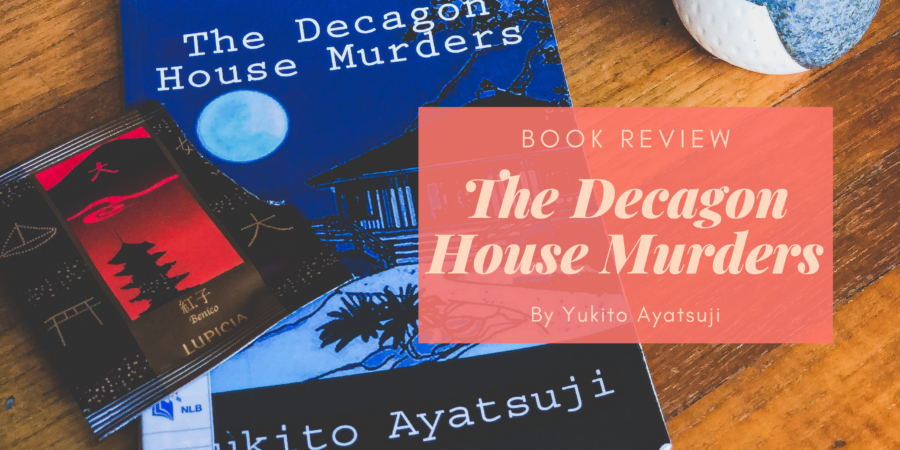It’s fitting that I read And Then There Were None a few weeks before I read The Decagon House Murders, because the latter pays homage to the former, and it was fun to have echoes of the original story in my head while reading it.
The Decagon House Murders takes place in two locations – one is a deserted island, where seven members of the K- University Mystery Club are camping for a week, and where the murders take place, and the other is on the mainland, where a member of the mystery club who didn’t go on the trip (Kawaminami), receives a threatening letter, alleging that the death of a member of the club was actually a murder. Bored by endless rounds of mahjong, Kawaminami and his new friend, Shimada, decide to investigate the letters.
What I found very interesting about the book was that the seven members of the murder club referred to each other by nicknames. Which is how you get a very meta-sounding opening where Ellery talks about how “mystery fiction is, at its core, a kind of intellectual game” with Carr and Leroux. If you’re familiar with the classics of the mystery genre, you will recognise that these nicknames refer to Ellery Queen, John Dickson Carr, and Gaston Leroux. And of course, given the obvious homage to Christie, we have a character nicknamed Agatha.
These opening pages, by the way, are also a clue as to how to enjoy the novel. The Decagon House Murders is part of the Honkaku tradition, where the game of solving the mystery is the most important aspect of the story. This means that as the reader, you will get all the clues needed to solve it and even if you can’t solve it, knowing who the murderer will make sense – at least that’s what happened for me. On the other hand, setting and characters are fleshed out only as much as needed, and you never really climb into the character’s heads. As the reader, I knew what they were thinking (as much as the narrator allowed me to), but I never felt what they were feeling.
Now, will you need to be familiar with the classics of the mystery genre? I would argue, no. And Then Were None is famous enough that the similarities in setting were obvious to anyone who’s a fan of the genre, but you don’t have to know the Christie’s mystery in order to solve this one. I suspect that the discussions about the form of a mystery would appeal to people who make a habit of considering these things, but as a part of the honkaku tradition, this story can be read as a standalone.
The edition of the book I read (published by Locked Room International), contains an introduction by Shimada Soji. The introduction helps the reader understand the place this book has within the development of the Japanese mystery and since it doesn’t have any spoilers, can be read before or after the actual story. My personal preference is to always read the story first and the introduction after, but in this case, it’s really up to you which you prefer.
Overall, this was an enjoyable book and well, I can see that if I ever go back to Japan, I will probably come back with a suitcase full of mysteries that are not available in English.
Postscript: Japanese Mysteries mentioned in the Introduction
Note: Not all of these novels are available in English. If you don’t read Japanese but you read Chinese, it may be possible to find these in Chinese instead.
- Murderer by Hamao Shiro (influenced by Van Dine)
- The Tragedy of the Funatomi Family by Aoi Yu (influenced by F.W. Crofts and Eden Phillpotts)
- The Tattoo Murder Case by Takagi Akimitsu
- The Inugami Clan by Yokomizo Seishi
- Prison Gate Island by Yokomizu Seishi (his most important work)
- The Tokyo Zodiac Murders by Shimada Soji
- The Crime in the Leaning Mansion by Shimada Soji
- Murder in the Red Chamber by Ashibe Taku

I definitely need to take a look at picking up an English version of this if possible! It sounds great!
It is! I would definitely recommend (and it’s pretty short too)!
The ending really gave me a shock! Indeed a very good read 😁
Yeah!! Loved it!